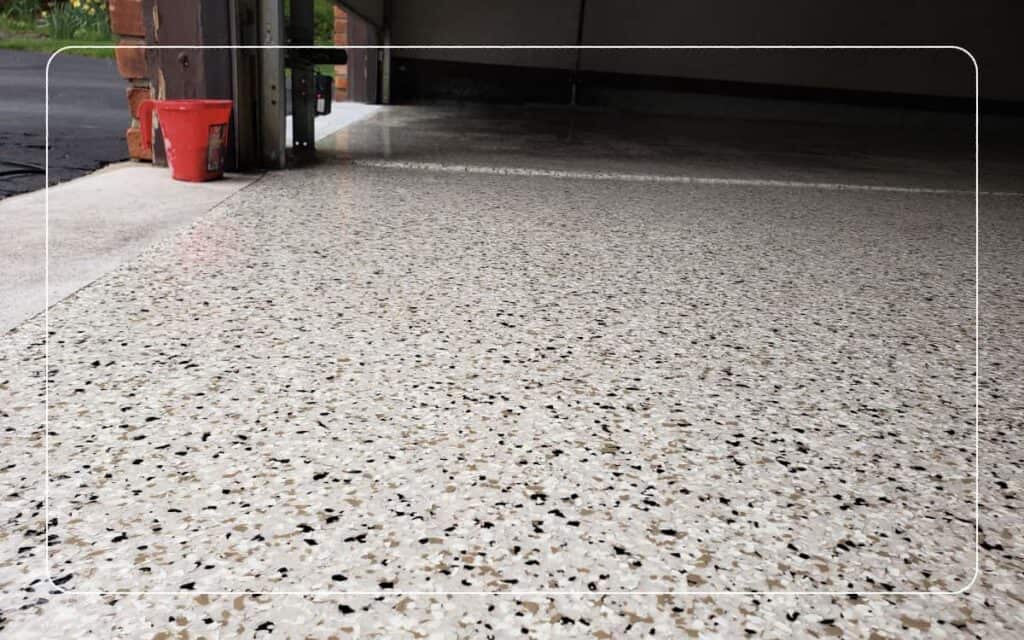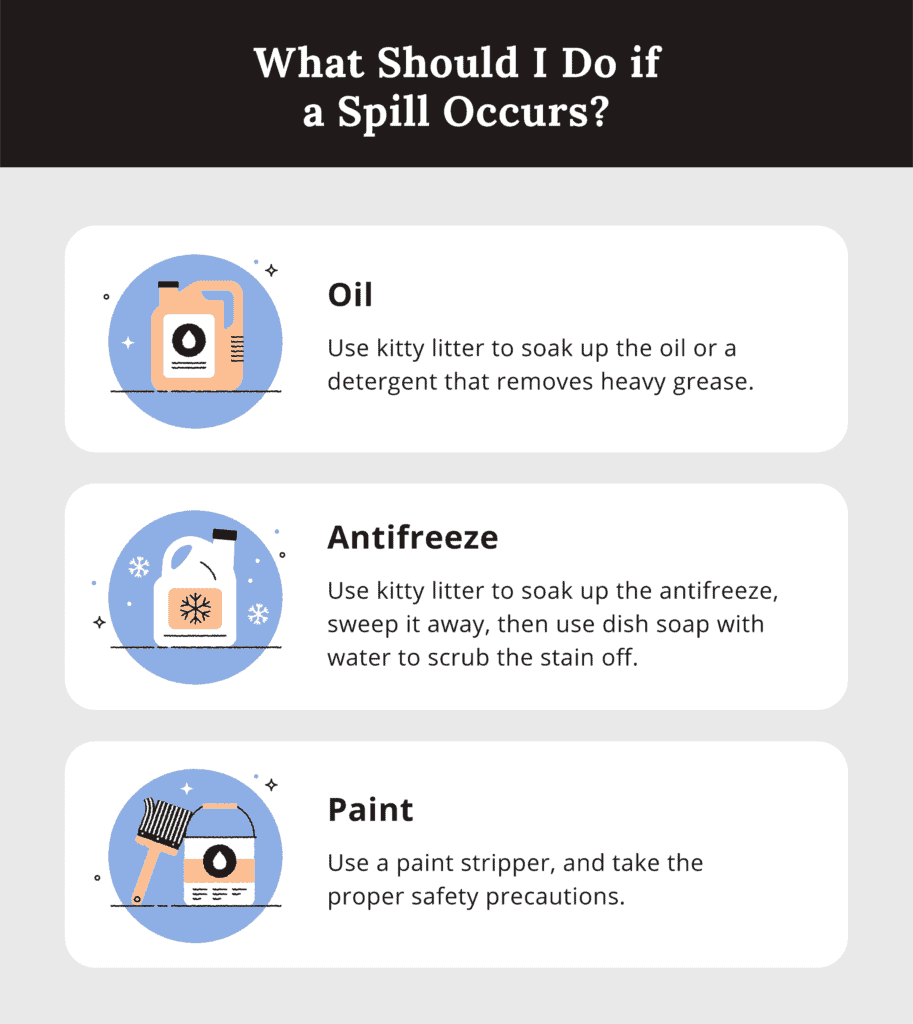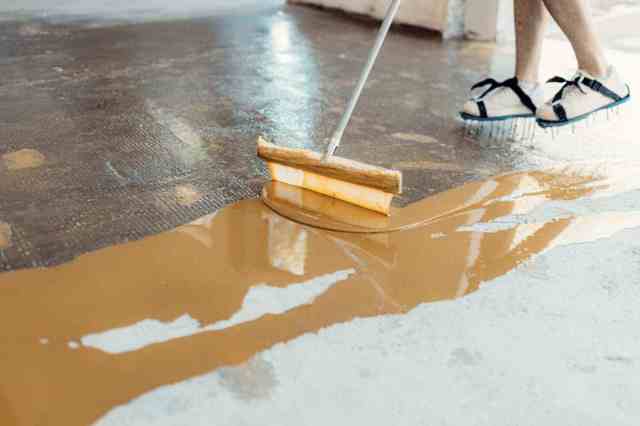Most garage floors take a lot of abuse. You walk on them, park on them, and sometimes spill things on them. You might even use your garage as an office or workshop, filling it with heavy furniture or machines that strain the floor.
You might be wondering why you have to protect your garage floor if it’s so hard in the first place. The answer is that it can help prevent long-term damage and costly repairs.
Fortunately, you can take steps to protect your garage floor from stains and other damage resulting from spills. This article will teach you how to keep your garage floor looking its best.
Why Is It Important to Protect Your Garage Floor?
With a few easy measures, you can extend the life of your garage floor and reduce the need for expensive repairs or even replacement. The most durable flooring materials may increase the cost to build a garage, but you can also use other, less-expensive methods that protect basic concrete floors.
Protecting your garage floor can bring several benefits:
- Improves durability over time
- Prevents accidents by making the floor safer to walk on
- Resists future stains and spills
- Makes regular maintenance easier
- Enhances the floor’s appearance
- Improves your resale value
Best Garage Floor Protection Options
There are some simple precautions you can take to preserve the condition of your garage floor. Below, we’ll get into the nine best tips for protection in the short and long term.
1. Apply a Coating or Sealer

If you have a concrete floor, you can apply a coating that prevents water and other spills from soaking into the concrete. This is one of the most popular ways to protect your floor from salt, dirt, and damage.
Epoxy, polyurethane, or acrylic are some of the best garage floor coatings and sealers to create a durable layer that resists stains, chemicals, and abrasion. Coatings and sealers can work for any size garage.
2. Use Parking Mats
Parking mats are another option: they fit under each tire of your car and are great at preventing tire marks from ruining the look of your floor. This option won’t protect the rest of your garage floor from spills or dropped tools, but it can be an efficient solution if you primarily use your garage for parking.
3. Lay Down Garage Floor Tiles
Floor tiles are an easy and versatile option to protect your floor. They consist of durable materials like PVC or polypropylene, and their interlocking shape allows them to cover the entire floor without shifting around. They resist stains, chemicals, and other damage. The biggest benefit is that you can easily replace them if necessary.
4. Purchase an Oil-Absorbing Mat

You can also purchase a special oil-absorbing mat to put down beneath your parked car. Many of these mats are even washable for repeated use in the case of frequent spills. They’ll protect against spills and can even provide limited protection against damage from dropped tools or other heavy items.
5. Try Anti-Fatigue Mats
If you use your garage as a workshop or spend long periods standing in it, anti-fatigue mats can be beneficial to protect both your garage floor ands your body. These padded mats provide cushioning that reduces fatigue on your feet, legs, and back. Their thickness acts as a barrier protecting the floor from drops and light spills, too.
6. Stain the Concrete Floor
Concrete stain is decorative and provides some protection, although not as much as some other options. Stains penetrate the concrete surface to create a more vibrant appearance. This protective option is useful for bare concrete floors in a covered garage with limited traffic.
While they might not provide as much protection as coatings, sealers, or tiles, they can still enhance the durability of concrete and make it easier to clean and maintain.
7. Add a Fresh Coat of Paint

Like concrete stain, paint is not a long-term protective solution. It’s a thin layer that’s not as durable as a coating or sealer, and it only lasts a certain amount of time before it needs repair or replacement. However, paint can revive the look of a tired garage floor and might cost less to repair than other protective methods.
8. Patch the Existing Damage
One of the least expensive ways to protect your garage floor is to patch and cover any existing damage with a concrete resurfacer. Cracks and spalling, or weathering, break down the structural integrity of your concrete garage floor. This makes it more vulnerable to damage and a trip hazard to anyone walking through.
Patching is a temporary solution that doesn’t get at what’s causing the damage in the first place. It also doesn’t protect against any future damage.
9. Keep Up with Regular Maintenance
Regardless of the protective method, regular cleaning and maintenance are essential to keep your garage floor looking its best. Sweep or vacuum the floor regularly to remove dirt and debris, and clean up spills as quickly as possible to prevent stains or damage.
Frequently Asked Questions
Now that you know how to protect your garage floors, ensure you get the full picture with these frequently asked questions.
What kinds of substances end up on a garage floor?
One of the most common substances spilled on garage floors is water. With a bare concrete floor, water can soak into its pores and freeze when the temperature drops, causing breaks and cracks.
Oil is another common substance—it might leak from your car or spill while you’re doing an oil change. Anti-freeze, brake fluid, and transmission fluid can also stain your garage floor. In addition, the garage is a common place to store paint, which can certainly lead to some colorful spills!
All of these things have the power to corrode or otherwise damage a concrete floor.
What should I do if a spill occurs?

If you spill oil on your concrete garage floor, you can clean it up with one of the following methods:
- Oil: Use kitty litter to soak up the oil or a detergent that removes heavy grease.
- Antifreeze: Use kitty litter to soak up the antifreeze, sweep it away, then use dish soap with water to scrub the stain off.
- Paint: Use a paint stripper, and take the proper safety precautions.
The epoxy on granite floors makes most spills on this surface easy to clean up. Rubber floors are resistant to spills and can be cleaned with a mild detergent and a mop.
You should clean up oil and other car fluid spills immediately, as they’re poisonous to animals and can cause a fire.
Is it worth sealing a garage floor?
It’s usually worth sealing a garage floor to protect it. Sealers can protect against moisture buildup, which is especially helpful in cold climates where built-up moisture can freeze and crack the floor.
Sealers can also guard against stains, chips, and other forms of damage. Plus, sealers can prevent your concrete floor from generating dust, keeping your garage cleaner in the process.
Design Your Ideal Garage
You want your garage to last as long as possible. And if you take a few steps to protect your garage floor today, you won’t have to worry about when a spill happens in the future. It’s an investment that pays off in the long run by preserving the functionality and appearance of your garage space.
If you’re curious about building a new metal garage, head over to our custom 3D builder to design your ideal garage space and visualize the final product.




